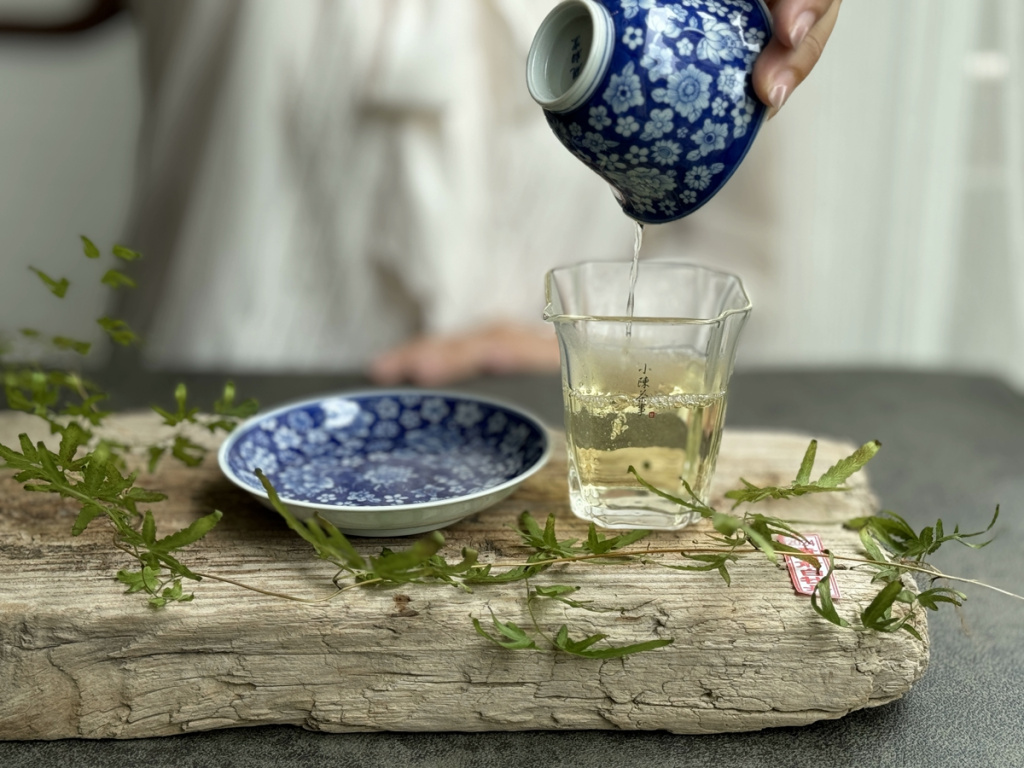The Legend of the White Peony: A Tea Story That Warms the Soul
White Peony (Chinese: 白牡丹, pinyin: báimǔdān) (Bai Mudan) is one of the most exquisite and ancient varieties of white tea from China. It received its name due to the delicate white hairs covering the young leaves, which resemble blossoming peony buds. Its history is shrouded in many legends passed down from generation to generation. One of the most famous tells the story of how this unique drink appeared in the world.
History and origin
The Legend of an Accidental Discovery
Legends about the origin of Bai Mudan are shrouded in romance and mysticism. One of the most famous tells how this tea was discovered by accident in the deep forests of China. A local resident, lost in search of medicinal herbs, came across tea bushes with unusual leaves. Having prepared a drink from them, he felt an unprecedented lightness and a surge of strength. Since then, this tea has become famous for its healing properties and excellent taste.
The Legend of the Emperor and the Sick Mother
According to the second legend, tea was discovered by Emperor Mao Yi, who lived during the Western Han Dynasty. There is no historical data about this ruler. The legend of Mao Yi and the White Peony is most likely a folk tale that arose and was passed down orally over many generations. Such legends often serve to explain the origin of natural phenomena, customs, or objects.
The Western Han (西汉, Xī Hán) is the first period of the Han Dynasty in China. It spans from 206 BC to 8 AD. This period was a time of significant political, economic, and cultural development in China. It was during the Western Han that the foundations were laid for many traditions and institutions that remained influential for centuries.
According to the second legend, during the Western Han Dynasty, there lived a ruler named Mao Yi, who, unable to stand the corruption of officials, left his position and went into the deep forest with his mother to live alone. The mother and son came to the foot of a green mountain and smelled an unusual aroma. After asking an old man about it, they learned that the aroma came from eighteen white peony rose bushes growing near a lotus pond. Seeing this place reminiscent of paradise, the mother and son decided to stay there. One day, the mother fell ill from old age and fatigue. Mao Yi began to look for a cure.
That night, he dreamed of an old man with a white beard who told him, "To cure your mother, you must use carp and fresh tea, and neither should be omitted." Mao Yi thought this was advice from an immortal. It was winter, so Mao Yi went to the pond, broke the ice and caught a carp, but where could he get fresh tea in winter? While he was at a loss, eighteen peony rose bushes turned into eighteen tea bushes covered with fresh green shoots. Mao Yi quickly plucked them and dried them, and the fluffy white tea leaves looked like white peony rose flowers. Mao Yi immediately boiled the carp with new tea and gave it to his mother to drink, and his mother's illness really did go away. From then on, the tea growing in this area was called Bai Mudan or White Peony. It has been valued since ancient times for its delicate taste, subtle aroma and healing properties.
Why White Peony?
The name of the tea is related to its appearance. Fresh leaves of White Peony are covered with white fluff, which makes them look like blossoming peony buds. In addition, this tea has a light infusion and a delicate, slightly sweet taste.
Today, White Peony is one of the most popular and expensive varieties of white Chinese tea. It is valued for its high quality, unique taste and rich history. Tea ceremonies with White Peony are a real art that allows you to enjoy every sip of this amazing drink.
Production and collection
Bai Mudan is made from young tea buds and the first two leaves picked in early spring. Picking tea is a delicate process that requires special care to avoid damaging the delicate leaves. After picking, the tea undergoes minimal processing: it is lightly withered in the sun to preserve the maximum amount of nutrients.
Taste and aroma
Bai Mudan has a delicate, sweetish taste with light floral and fruity notes. The aroma of the tea is subtle, fresh, with hints of honey and dried fruits. The infusion is light yellow.
Health benefits
Bai Mudan is valued not only for its exquisite taste, but also for its rich composition of useful substances. It contains:
- Antioxidants: protect cells from damage, slow down the aging process.
- Amino acids: improve metabolism, strengthen immunity.
- Vitamins and minerals: promote good health.
Regular use of Bai Mudan helps:
- Improve digestion
- Strengthen the immune system
- Relieve stress and fatigue
- Cleanse the body of toxins
- Slow down the aging process
How to brew Bai Mudan
To reveal the full bouquet of flavors of Bai Mudan, it is important to brew it correctly. It is recommended to use water at a temperature of about 80°C. The tea is brewed in a porcelain or glass teapot, using a ratio of 1 teaspoon of tea per 150 ml of water. The first brewing is usually poured out to rinse the leaves. In subsequent brewings, the brewing time can be increased.
Bai Mudan is not just a drink, it is a whole culture. A tea ceremony with Bai Mudan is an opportunity to relax, enjoy the moment and immerse yourself in the atmosphere of ancient Chinese traditions. The legend of the White Peony is a symbol of purity, harmony and longevity. Tea, created by nature and man, has become not only a drink, but also part of the cultural heritage of China.
- Комментарии
- Вконтакте





